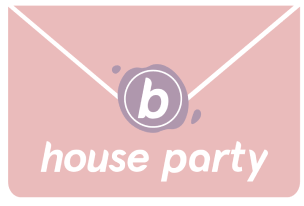Enough about the orgasm gap -- there’s a masturbation gap, too!

Masturbation is my favorite form of self-care. It’s so many things -- a way for me to connect to myself, a reminder that my pleasure isn’t someone else’s responsibility, a way to grow accustomed to my sexual body.
As a teenager, I felt like this was something I had to be ashamed of. I remember having enormous guilt for something that should’ve been a celebrated aspect of my personhood. And when I told close female friends that I masturbated, expecting solidarity, there was clear judgment. None of them were masturbating -- or at least, none of them would admit to it. I felt like I was sexually deviant or obsessive. Meanwhile, boys were always talking or joking about masturbation. Television sitcoms often featured a disgruntled mom finding her preteen son’s crusty socks and realizing that he was jerking off into them. Conversely, I never saw female masturbation displayed.

What I learned from that is, if other girls weren’t masturbating at all, my behavior was especially odd as a daily practice. So I started lying. I stopped having conversations with my friends about pleasure. It wasn’t until we were all having sex that masturbation came up again, only this time it was framed differently.
“If you don’t masturbate, how will you be able to tell your partners what you like?” I’d hear, which is a valid question. Masturbation makes it easy to communicate your likes and dislikes. But there is a greater reason to explore your own body than just to gather data for someone else. Masturbation is about the self. And focusing on self-pleasure, in a culture that hasn’t traditionally encouraged women to seek it, is revolutionary.
It’s important to realize that the concept of female pleasure is new. Up until the mid-1900’s, nobody believed that we had normal sexual impulses. In 1913, Havelock Ellis, a leading physician studying human sexuality, wrote that “sexual anesthesia is considered natural in women, some declaring that any other opinion would be degrading.”

So penetrative sex existed solely as a vehicle for male desire and as a path to pregnancy. Clitoral stimulation, the way that most women actually get off, wasn’t perceived sexually at all. It was a remedy, performed by a doctor, for a women’s disease called hysteria. And literally anything could be hysteria. Its symptoms were things like anxiety, irritability, headaches, coarse language, and according to Ellis, 75% of women suffered from it! Which sounds a lot like whenever women were in a bad mood, their husbands sent them to a doctor to have their sexual body parts played with.
Female orgasms were called “paroxysms” rather than acknowledged as an actual experience of climax. And when doctors finally got sick of performing this “cure”, vibrators were invented to rescue them from finger fatigue and hand cramping. They were no more excited about playing with our clits than (some) men are currently. And those attitudes about female sexuality trickled down. We see them on television, where wives have often been written as exhausted and begrudging sexual partners. Interpersonally, we hear that women are just “less visual” and less sexual. And ultimately, it normalizes male masturbation but turns female masturbation into something awkward and infrequent. Thus, the masturbation gap was created.
There’s a lot of information out there about the orgasm gap but not as much of a discourse about the masturbation gap. Basically, in stigmatizing female sexuality, women cum way less overall. They masturbate way less than their male counterparts -- probably because they are primarily using it to get information for partnered sex. In a national study, 83% of men between the ages of 20-24 reported masturbating in the previous year compared to 64% of women.
According to Kristen Mark Ph.D., a sex and relationships researcher, only 8.7% of women masturbate daily compared to 25% of men. I am part of that 8.7%! And while there is little research done on why that number is so low, Mark thinks its due to the enormous shame that girls and women feel about self-pleasure.
“Girls tend to learn swiftly and early on that masturbation is shameful,” she writes. “Men still seem able to talk about masturbation with freedom, which automatically gives them a sexual advantage. Women, meanwhile, are for the most part stuck feeling ashamed.”
The solution is normalizing and integrating masturbation as a healthy part of sexual development. Rather than positioning pleasure as something that boys and men have exclusive access to, I’m ready for us to teach young girls about masturbation the way we teach them about periods and contraception. Plus, it’s not too late for women to start connecting with their sexual body more consistently. It can help heal sexual trauma, it relieves stress, it’s good for your health, and more importantly, it feels great.




